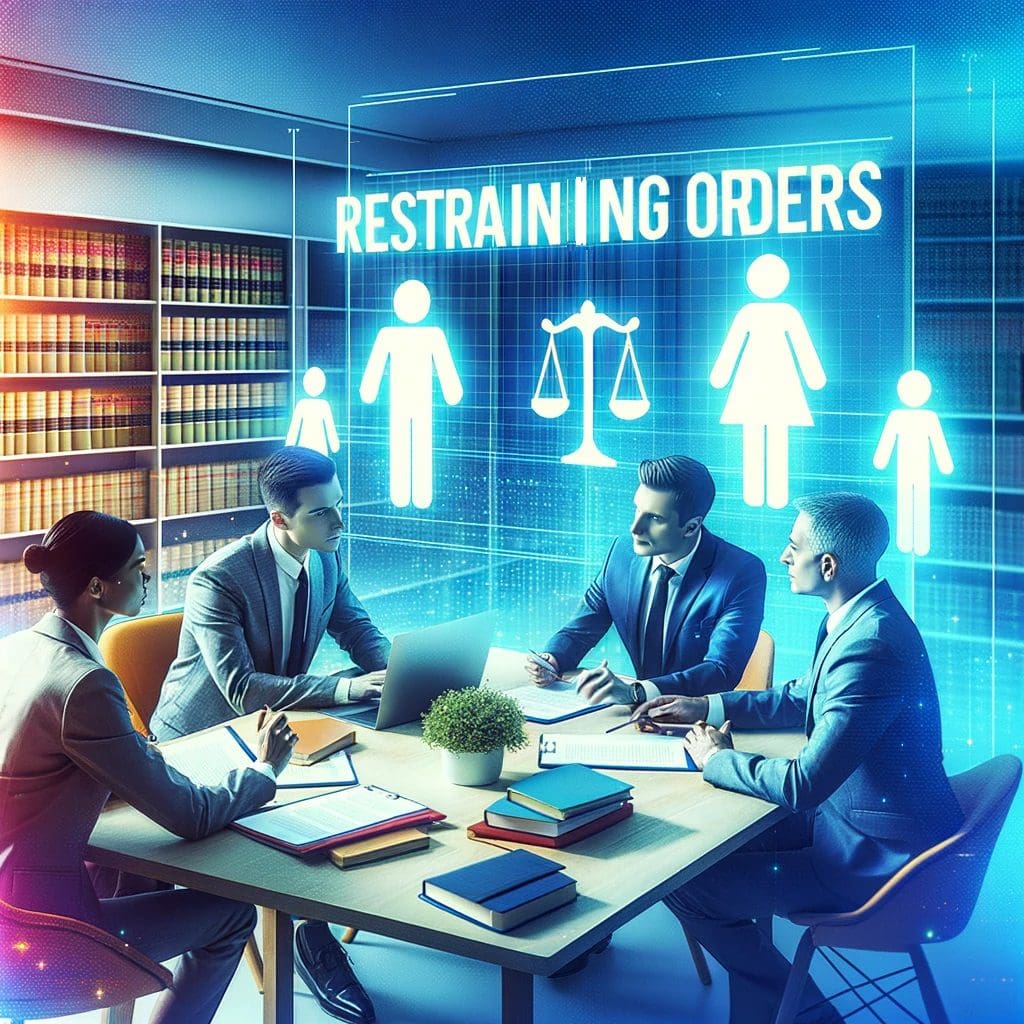Restraining Orders

In the multi-faceted domain of legal consultation industry, Restraining Orders epitomize a significant realm that directly impacts the lives of individuals. Also referred to as Protective Orders or Orders of Protection, these legal mandates serve as a crucial resource for ensuring the safety and well-being of individuals facing threats or harassment. This article embarks on a thorough exploration of restraining orders and their indelible imprint on the legal consultation sphere.
Restraining orders, fundamentally, are legal directives issued by a court to prevent an individual from engaging in certain activities, especially towards another individual. The issuance, enforcement, and implications of restraining orders vary significantly across different states and international jurisdictions. Through an array of interviews, case studies, testimonials, and expert analyses from diverse legal practitioners such as judges, defendants, prosecutors, and legal scholars, this narrative aims to unravel the complexities surrounding restraining orders.
Historically, the advent and evolution of restraining orders have been shaped by a myriad of legislative efforts, both successful and failed. A deep dive into these legislative endeavors unveils the trajectory of legal reforms aimed at bolstering the efficacy and scope of restraining orders. Additionally, a retrospect into historical developments provides a lens through which the progression of legal frameworks surrounding restraining orders can be viewed.
Internationally, the stance on restraining orders reflects a vast spectrum of legal cultures and practices. Some regions exhibit a robust legal framework supporting the issuance and enforcement of restraining orders, while others may lack comprehensive laws in this regard. A comparative analysis of international perspectives elucidates the diverging legal landscapes and the consequential implications on the legal consultation industry.
The ripple effects of restraining orders extend beyond the individuals they protect or restrict; they reverberate through families, communities, and the broader societal fabric. Legal professionals in the Legal Advice Sector play a pivotal role in navigating the intricate maze of laws, regulations, and procedures pertinent to restraining orders. Their expertise guides individuals in understanding the process of obtaining, contesting, or enforcing a restraining order, thereby demystifying the legal juggernaut that often seems daunting to the layman.
Furthermore, recent news and judicial pronouncements often cast a spotlight on the challenges and breakthroughs in the realm of restraining orders. The media, alongside legal scholars and practitioners, significantly shape the public discourse and legislative actions concerning restraining orders.
In conclusion, the exploration of restraining orders within the Legal Consultation Industry not only unveils the complex legal frameworks but also underscores the indispensable role of legal consultation in fostering a legally compliant and safe society. Through a deeper analysis, international comparisons, and expert opinions, this article endeavors to provide a comprehensive understanding of restraining orders and their overarching impact on the legal advisory field and society at large.
_______________________________________
Empowering Victims: Understanding and Obtaining Restraining Orders
Restraining orders, also known as protective orders, are legal measures designed to protect individuals from harassment, abuse, or violence by prohibiting another person from contacting or being near them. Understanding the process of obtaining a restraining order and knowing your rights is crucial for victims seeking to protect themselves from further harm.
Navigating the Legal Landscape of Restraining Orders
In cases of domestic violence, harassment, or stalking, restraining orders can provide a vital layer of protection for victims. These legal orders, issued by a court, establish clear boundaries and restrictions on the actions of the individual named in the order. By law, the restrained person must refrain from contacting or harassing the protected individual, both directly and indirectly. Violating a restraining order can result in legal consequences, including arrest and criminal charges.
Understanding the Types of Restraining Orders
There are several types of restraining orders, each serving a specific purpose and offering varying levels of protection:
- Domestic Violence Restraining Orders (DVROs): These orders are issued in cases where the victim has a close relationship with the abuser, such as a spouse, partner, family member, or cohabitant. DVROs can include provisions for stay-away orders, no-contact orders, and orders for temporary custody of children.
- Civil Harassment Restraining Orders: Civil harassment restraining orders are available to individuals who are being harassed, stalked, or threatened by someone who is not a close family member or intimate partner. These orders can protect victims from neighbors, coworkers, acquaintances, or strangers who pose a threat to their safety.
- Elder or Dependent Adult Abuse Restraining Orders: Designed to protect elderly individuals or dependent adults from abuse, neglect, or financial exploitation, these restraining orders can be obtained by family members, caregivers, or concerned individuals acting on behalf of the victim.
- Emergency Protective Orders: Issued by law enforcement officers in emergency situations, emergency protective orders provide immediate protection for victims of domestic violence, abuse, or threats. These orders are temporary and typically last for a short period, allowing the victim time to seek a more permanent restraining order through the courts.
Steps to Obtaining a Restraining Order
Obtaining a restraining order typically involves several steps, including:
- Filing a Petition: The process begins with filing a petition for a restraining order at the courthouse. The petitioner must provide detailed information about the circumstances of the harassment or abuse, including specific incidents and any evidence or witnesses available.
- Attending a Hearing: After filing the petition, the court will schedule a hearing to review the request for a restraining order. Both the petitioner and the respondent will have the opportunity to present their cases and provide evidence supporting their positions.
- Obtaining a Temporary Order: In some cases, the court may issue a temporary restraining order (TRO) to provide immediate protection for the petitioner until the hearing can be held. TROs are typically valid for a short period, such as 10 or 21 days, pending the outcome of the hearing.
- Finalizing the Order: If the court determines that the petitioner meets the legal requirements for a restraining order, a final order will be issued, outlining the specific terms and conditions of the order. This order may be valid for a specified period, such as one or five years, and can be extended if necessary.
Enforcing a Restraining Order
Once a restraining order is issued, it is essential for the protected individual to take steps to enforce the order and ensure their safety. This may include:
- Informing Law Enforcement: Notify local law enforcement agencies of the existence of the restraining order and provide them with a copy of the order.
- Documenting Violations: Keep detailed records of any violations of the restraining order, including dates, times, and descriptions of the incidents. This information can be used as evidence in court if necessary.
- Seeking Legal Assistance: If the restrained person violates the terms of the restraining order, seek legal assistance from an attorney or victim advocacy organization to explore your options for enforcement and protection.
Conclusion
In conclusion, restraining orders are powerful legal tools that can provide vital protection for victims of harassment, abuse, or violence. By understanding the process of obtaining a restraining order, knowing your rights, and taking proactive steps to enforce the order, you can empower yourself to protect your safety and well-being. If you are in immediate danger, contact local law enforcement or seek assistance from a domestic violence hotline or victim advocacy organization. Remember, you are not alone, and help is available to support you through this challenging time.

